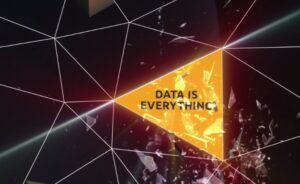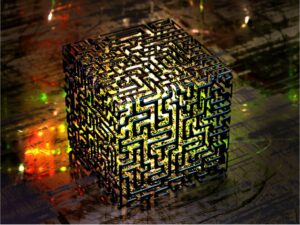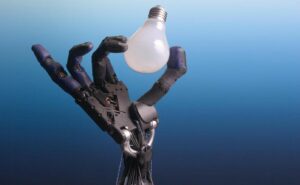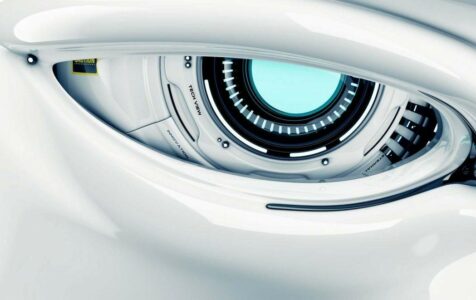Many innovations have happened in the past period. However, we can’t deny that the recent pandemic still influences our lives through increased digitization of businesses transforming society in 2022.
Within these digital advances, the demand for sustainability and network speed is still high, as those are one of the most important triggers of digital transformation.
One of the lessons learnt in the pandemic period by businesses is that a real transformative change is not as difficult to implement as it was thought. The main thing you need is motivation!
With this in mind, here are the top trends in 2022 which are likely to focus on the merge of technology trends, the same way we combine digital tools in new and amazing ways.
DATAFICATION
Data is the key element in any of today’s trends we will mention later. Simply put, datafication is the adaptation of human tasks into data-driven technology.
What digitization means is that we have huge amounts of data available – the same data has become the paramount asset of every organization. We use data to understand our customers or users better, research any key trends in the industry you operate and get insights into what’s going on inside your organization.
Data is a modern ‘asset’, thus keeping your data stored properly and securely as it has become necessary in our businesses and economy today.

COMPUTING POWER
Computing power is still on the rise. We significantly get better cloud infrastructure, and many companies are migrating from stand-alone to these cloud platforms.
With computer power, more tech jobs are created, like data science, robotics, and more. The more computing power required in our devices, the more IT engineers will thrive.
Computing power also drives better networks. 5G is already present, while 6G is seen on the horizon, meaning we will have more power in our everyday devices.
SMARTER DEVICES
As we already mentioned, computing power and Artificial Intelligence (AI) technology have granted us access to smarter devices.
Automated devices like autonomous cars or intelligent robots help people complete more tasks in a shorter time span. And while these AI-driven machines help us make our lives easier, scientists are already working on AI home robots, wearables, appliances and more.
Nowadays, every company needs smart software applications to a certain extent to make work more manageable.
QUANTUM COMPUTING
Quantum computing is processing information that takes advantage of quantum entanglement and superposition. It enables machines to handle huge amounts of information in a completely different way than traditional computers.
Quantum computing can provide power a trillion times more potent than what we can experience today.
Thanks to the ability to easily monitor, analyze, and act on the data, this amazing technology is involved in solutions related to preventing the spread of coronavirus, developing potential vaccines and more.
Another application of quantum technology is in the banking and finance sector, where it can help in managing credit risks, fraud detection, and high-frequency trading.
Quantum computers are now endless times faster than regular computers, and big players in the market like AWS, Google, Microsoft, Honeywell, and others are already participating in innovating in the field of Quantum Computing.
It is predicted that quantum computers can fundamentally alter the way we approach problems like logistics, drug innovations, and more industry niches.

ARTIFICIAL INTELLIGENCE (AI)
Computing power and data combined are used today by scientific organizations to provide more advanced AI capacities.
Artificial Intelligence (AI) technology has already been proven helpful in image or speech recognition, smartphone personal assistants, and more.
Aside from that, AI has a huge impact and usage in many fields. For example, it can help predict demand for services like hospitals or hospitality organizations; thus, they can make better decisions about resource utilization.
Detecting the modified patterns in customer behaviour by analysis of data and improvement of personalized experiences is of utmost importance in almost every industry.
An important branch of AI technology is Machine Learning, which gives the ability to computers to learn to recognize an object in an image or a video.
Language processing (NLP) is also progressing, so we have machines today that understand our voices and can speak back to us.
Low-code and no-code have also become a new trend. We can now build our AI using drag-and-drop graphical interfaces, enabling people to create amazing applications without being limited by poor or no skills in coding.
EXTENDED REALITIES
Today, we have Augmented Reality (AR) capabilities on our devices, and we also witness an increased interest in Virtual Reality (VR). With these features, we can connect portable VR devices to our smartphones, ensuring exceptional VR experience on the go.
The trends of Augmented Reality (AR), Virtual Reality (VR), and Extended Reality (ER) will be further integrated into our lives. These realities have a huge potential in many industries like education, healthcare, entertainment and more.
For example, these technologies can be used in cultural institutions like museums, galleries, etc., to offer a deeper experience, enhance marketing strategies, or simulate various situations for people to learn faster (like training doctors to do surgeries, etc.).
Extended realities facilitate the way for experiences in Metaverse, a shared virtual world where users have access via different platforms or devices.

3D PRINTING
We can now make things none of us thought we could – a real object from a printer. That is where 3D printing comes onto the stage, which is used to develop prototypes.
This technology greatly impacts the biomedical and industrial sectors as well as the data and healthcare sectors.
Transformations we have witnessed and that we will yet to see will include mass production of customized items, printed food, metal and composite materials, and much more.
ROBOTIC PROCESS AUTOMATION (RPA)
Robotic Process Automation RPA is a technology helping people to automate various work.
It is used to automate business processes like processing transactions and data, interpreting applications or even replying to emails. In a nutshell, it automates repetitive tasks that people used to do earlier manually.
Some trends within RPA are:
- Automation fabric – It is a type of advanced automation program uniting all automated elements of business processes targeting growth.
- Rise of automation CoEs (Center of Excellence) – It is an automated center solving AI deployment and RPA implementation problems. It consists of a small internal team of automation experts.
- Semantic automation – It is a method liberating from rules-based development processes where robots observe processes and emulate the same without having to follow the predetermined rules.
HyperAutomation – It is a process harnessing the power of AI, RPA and ML, designed to process massive amounts of data to optimize business processes across diverse areas.

GENOMICS
Genomics is a kind of technology where you can study your DNA and use your findings to improve health, fight diseases, and more. Genomics examines DNAs, their mapping, and their structure to help quantify our genes and find diseases or potential problems that can cause major health issues at a later stage.
The top trends that help us to alter crops, eradicate diseases, or develop new vaccines like Covid are genomics, including gene modification and synthetic biology.
In 2020, Emmanuelle Charpentier and Jennifer A. Doudna were awarded the Nobel Prize for genome modification, showing the significance of this growing trend.
Nanotechnology is another technology that will help us develop items like bendable screens, improved batteries and much more. The trend is still on the rise and is yet to show its full potential.
NEW ENERGY SOLUTIONS
Another trend already on the stage is new energy solutions as we continue to tackle climate change.
New energy solutions allow us to build cars that use electricity or batteries and houses using renewable and solar energy. People have become more conscious about their carbon footprints and waste; thus, having technology that turns those into renewable energy will be more than helpful.
These new energy trends will enable us to power ships, planes, and trains, and generate energy for the public. We will also see more improvements in car batteries and inventions in the field of nuclear power and green hydrogen.
EDGE COMPUTING
With such a large amount of data companies use, cloud computing shows certain weak points. Edge computing helps here as it avoids latency caused by cloud computing and migrating data to the designated center for processing.
Edge computing is great for handling time-sensitive data within remote locations without connectivity (or a limited one). In such cases, edge computing appears like mini data centers.
Such computing, like Edge Computing, will increase as IoT increases in use.
EVERYTHING-AS-A-SERVICE AND NO-CODE
Data and technology drive more powerful solutions. However, all the setups, like the cloud for storage or network, represent expenses (and risks) of the successful setup.
That is the reason hybrid solutions have grown to the point where ‘the best of both worlds have been combined. There are ready-built AI solutions in almost any industry, from marketing to design and production processes. During this year, we’ve seen businesses utilizing AI/IoT infrastructure where they do not have any piece of code.
No-code interfaces have become more popular since a lack of programming knowledge will no longer represent a barrier to bringing any innovative ideas into reality.
A good example is OpenAI, a research group founded by Elon Musk – they’ve recently revealed Codex, a programming model generating code from spoken language.
Once technology like this matures, our inventive ideas won’t be held back, nor will we have issues like a lack of resources or technical skills.

DIGITAL TRUST AND TRANSPARENCY
In order for technology to function, people need to trust it. To date, we’ve seen pushbacks against many ways where technology is used in an irresponsible and intrusive manner.
There are some alarming use cases of AI today. We’ve seen incidents where AI displayed damaging statements, for example, when Facebook appeared to label images of black people as ‘primates’.
The whole idea of transparent and understandable AI is growing in popularity recently as it became apparent that there are portions of society that distrust it.
In order to fight misleading information, the EU proposed the Artificial Intelligence Act, which would prohibit authorities and the government from using AI for social scoring systems or from using facial recognition technology in public places.
This balancing act will likely become a greatly prominent subject of discussion in 2022 as more and more people have become aware of the potential positive and negative effects on society that AI may have.
Final Word
The listed trends have been and will continue to shape industries and businesses today. The top strategic technology trends will accelerate digital capabilities and growth by solving common business challenges.
Such trends offer a roadmap to differentiating your organization from your competitors and fulfilling business objectives.
Keep an eye on these trends and see how they will propel strategic change.
